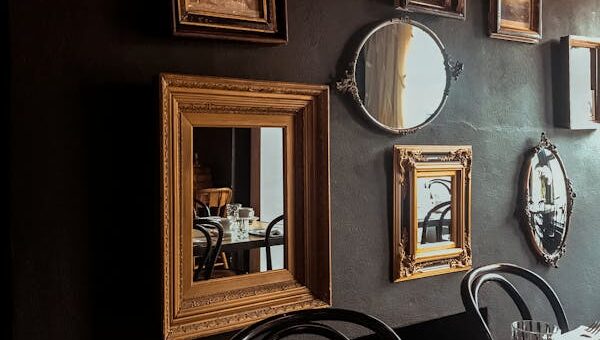
Introduction
Creating a dining room that reflects your personality while maintaining style and harmony can seem daunting. However, the art of mix and match dining room furniture is a powerful way to infuse individuality and charm into your space. This comprehensive guide walks you through every essential element, from color schemes to material selection, and offers expert tips to design a dining room that is as functional as it is stylish.
1. Understanding the Basics of Mixing and Matching
1.1 Why Mix and Match?
Gone are the days of cookie-cutter dining sets. Today’s interiors favor eclectic, layered, and customized styles. Mixing and matching furniture not only allows you to express your personal aesthetic but also helps to:
- Utilize existing pieces rather than replacing everything.
- Create dynamic visual interest in the room.
- Adapt to changes in trends and preferences over time.
Mixing different furniture styles, colors, and materials offers a tailored feel that reflects your lifestyle. It also often proves to be more budget-friendly, as you can incorporate vintage, hand-me-down, or upcycled pieces.
1.2 Core Principles to Follow
Before diving into styles and arrangements, it’s important to ground your choices in a few basic design principles:
- Balance: Distribute visual weight evenly across the room.
- Scale: Ensure all pieces relate proportionally to each other.
- Harmony: Aim for a common thread—color, texture, shape—that ties everything together.
Think of your dining room like a painting: even when elements differ, they must belong in the same frame.
2. Choosing a Style Foundation
2.1 Define Your Central Theme
Start with a clear idea of the overarching style you want to achieve. Are you drawn to farmhouse, modern, bohemian, or traditional aesthetics? Establishing a central theme will help in guiding your choices and ensuring cohesion.
Examples of Style Pairings:
| Style 1 | Style 2 | Works Well Because |
|---|---|---|
| Mid-century | Industrial | Clean lines meet raw materials |
| Farmhouse | Scandinavian | Both favor simplicity and warmth |
| Vintage | Bohemian | Eclectic but comfortable |
By blending two complementary styles, you can create a layered look that is both intentional and visually stimulating.
2.2 Decide on a Focal Piece
Choose one key item to anchor the room—often the dining table. Once selected, build the rest of your design around this piece. For example, a rustic wood table can be balanced with modern acrylic chairs or classic upholstered seating.
Tips for focal pieces:
- Go bold with texture or color.
- Ensure it’s functional for your space.
- Consider its maintenance and longevity.
This strategy allows for intentional mixing and prevents the room from feeling chaotic.
3. Coordinating Colors, Materials, and Textures
3.1 Creating a Color Palette
Color is a powerful design tool. A unified color palette ensures harmony even when styles vary. Choose 2–3 main colors and 1–2 accent tones.
Suggested Color Schemes:
- Neutral base (white, beige, gray) + bold accent (teal, mustard)
- Warm wood tones + black + ivory
- Monochrome base with mixed metal finishes
Keep walls and larger furniture neutral if you’re mixing bold chairs or patterned rugs.
3.2 Blending Materials and Finishes
Combining wood, metal, glass, and fabric can add texture and richness. However, make sure there is repetition to create unity.
Example Material Pairings:
- Reclaimed wood table + metal chairs
- Glass top table + velvet upholstered chairs
- Marble table + wicker or rattan seats
Consistency in finish (e.g., all matte or all gloss) can also subtly tie different pieces together.
4. Balancing Shapes, Sizes, and Proportions
4.1 Aligning Scale and Proportions
The visual balance of your dining room hinges on proportion. Pair substantial tables with larger chairs or slim tables with sleek seating.
Quick Tips:
- Leave 24–30 inches between table and walls for easy movement.
- Maintain 6–12 inches between chair seats and tabletop.
- Use a bench or stools on one side for variety and space-saving.
Avoid overcrowding—more space enhances the aesthetic and usability.
4.2 Mix Chair Styles Strategically
Chairs offer the easiest way to introduce variety. Consider mixing head and side chairs, alternating colors, or using different shapes.
Ideas for Chair Mixing:
- Upholstered armchairs at the ends + wooden side chairs
- Four identical chairs + two accent chairs
- Mismatched vintage chairs in a unified color
Whatever you choose, ensure seat height and comfort levels are consistent.
5. Accessorizing and Finishing Touches
5.1 Lighting and Rugs
Lighting and floor coverings help anchor your design.
Lighting Tips:
- Choose a fixture that complements your style mix.
- Pendant lights or chandeliers should be centered and hung 30–36 inches above the table.
Rug Guidelines:
- Rug should extend at least 24 inches beyond the table edge.
- Patterns can unify mixed furniture styles.
A well-chosen rug or light fixture acts as a visual connector.
5.2 Wall Decor and Storage
Your walls and storage should echo the room’s design narrative. Consider:
- Gallery walls using different frame styles but unified color.
- Open shelving with a mix of ceramic, glass, and wooden items.
- Sideboards or hutches that differ in style but match in tone.
Don’t overfill the room—leave some white space to let each element breathe.
Conclusion: Make It Your Own
Designing a dining space with mix and match dining room furniture isn’t about following rigid rules—it’s about creativity, balance, and personal expression. Remember to:
- Start with a clear style vision.
- Anchor the room with a strong focal piece.
- Play with color, shape, and texture strategically.
- Keep function and comfort in mind.
By thoughtfully combining elements, you create a space that tells your unique story. Have fun with the process—and don’t be afraid to experiment. Share your dining room makeover journey on social media or with friends for even more inspiration!